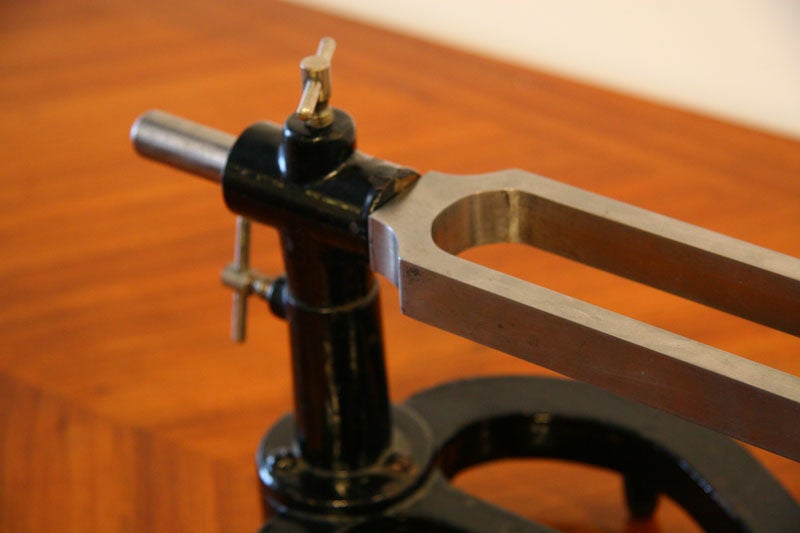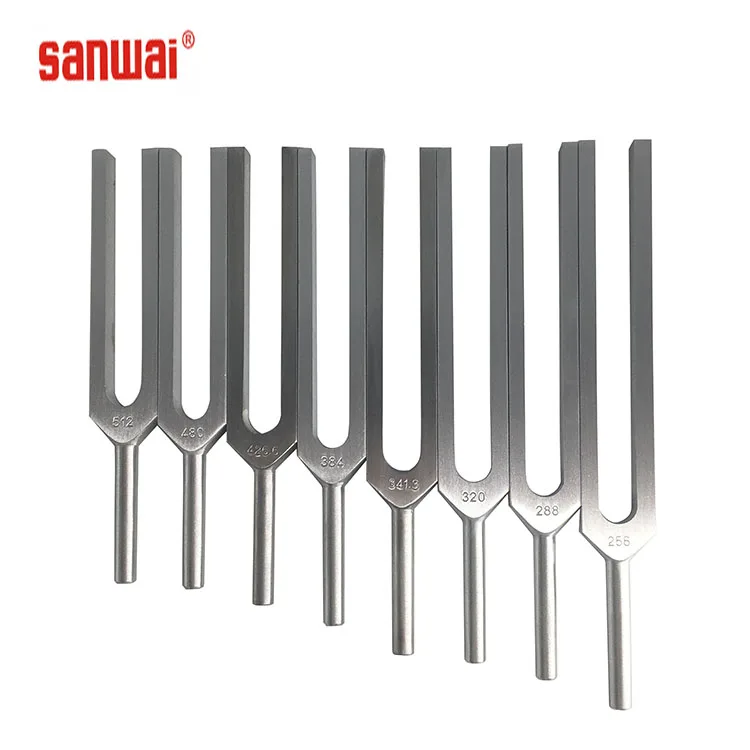

”Twang” the free end of the ruler while you hold the other end down on the desk. You can model how the length of a tuning fork affects the frequency by placing a plastic ruler over the edge of a table. How do instrument builders decide the shape, size, and material of their instruments? Get the students to touch various objects with their tuning fork to see whether the sound becomes louder or softer.

Brainstorm with the class on how the tuning fork could make a softer sound.Optional (if you have a resonance box): Strike the fork and place the handle on the box.Strike the fork and place the handle on the table.Brainstorm with the class on how the tuning fork could make a louder sound.Strike the forks one at a time to determine the answer.Ask the class to predict which fork will have the highest and lowest sound (pitch).Show the class a selection of different tuning forks.How can we decrease the volume of a tuning fork? How can we increase the volume of a tuning fork? If you know frequency of each fork, can you tell me how many times per second each fork will vibrate? Why do different sized tuning forks produce different sounds? If using this as an activity, provide the materials above for each pair of students. Rubber mallet or the rubber bottom of a shoe Acoustic (sound) resonance is an important consideration for instrument builders, as most acoustic instruments use resonators (think of the box of a guitar or a violin, or the hollow body of a drum).ĭescribe what pitch is and how it varies. This frequency is known as the object's resonant frequency. Resonance is the tendency of an object to vibrate at maximum amplitude (size) at a certain frequency. These words refer to what the listener experiences.
Large tuning fork skin#
The energy from the vibrating fork is converted to moving your skin or clothes rather than moving air.īoth pitch and volume are subjective. Touching a vibrating fork to clothes or your hand causes a damping effect on the vibrations (reduction in size) and the sound disappears. Placing the vibrating fork on a resonance box focuses the sound and makes it echo rather than letting the sound wave/vibrations spread out, resulting in a louder sound. When both the table and the tuning fork vibrate, more air molecules are moved than by the tuning fork on its own. Touching the vibrating fork to a table after being struck produces a louder sound. Hitting the fork harder will produce a louder sound because the initial vibration was larger. There are a few ways of varying the volume of a tuning fork. Bigger/ amplified vibrations result in bigger/louder sounds. Volume, or loudness, is related to the strength, intensity, pressure, or power of the sound.

Long prongs will bend more readily and therefore tend to vibrate at a lower frequency when struck. Shorter prongs produce higher pitch (frequency) sounds than longer prongs. Each fork is stamped with the note it produces (e.g. The pitch that a particular tuning fork generates depends on the length of its prongs.

Changing the number of vibrations per second changes the pitch. A tuning fork emits a pure musical tone (after waiting a moment) as it vibrates after you strike it. Tuning forks allow us to study the basic qualities of sound first hand. In this activity, students experiment with tuning forks to produce various pitches and volumes.


 0 kommentar(er)
0 kommentar(er)
